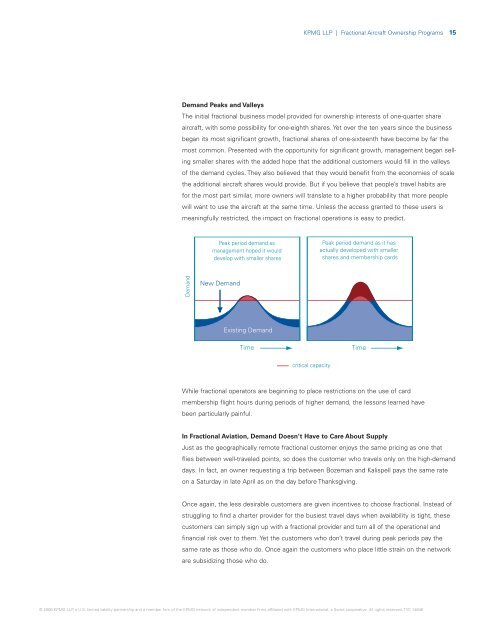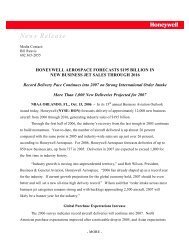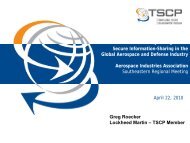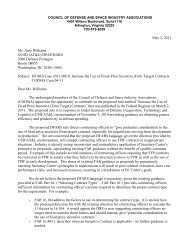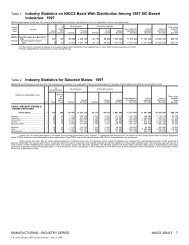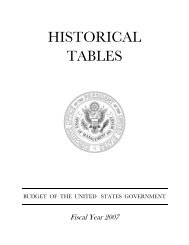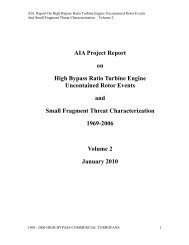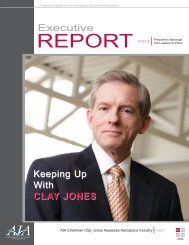Fractional Aviation Ownership Programs - Aerospace Industries ...
Fractional Aviation Ownership Programs - Aerospace Industries ...
Fractional Aviation Ownership Programs - Aerospace Industries ...
You also want an ePaper? Increase the reach of your titles
YUMPU automatically turns print PDFs into web optimized ePapers that Google loves.
Daily DemandWeekly DemandAnnual DemaKPMG LLP | <strong>Fractional</strong> Aircraft <strong>Ownership</strong> <strong>Programs</strong> 15MoreNumber of TripsNoonDemand Peaks and ValleysThe initial fractional business model provided for ownership interests of one-quarter shareaircraft, with some possibility for one-eighth shares. Yet over the ten years since the businessbegan its most significant growth, fractional shares of one-sixteenth have become by far theSM T W T F Smost common. Presented with the opportunity for significant growth, management began sellingsmaller shares with the added hope that the additional customers would fill in the valleysof the demand cycles. They also believed that they would benefit from the economies of scaleTypical demand Excess capacity Excess demandthe additional aircraft shares would provide. But if you believe that people’s travel habits arefor the most part similar, more owners will translate to a higher probability that more peoplewill want to use the aircraft at the same time. Unless the access granted to these users ismeaningfully restricted, the impact on fractional operations is easy to predict.JanJunPeak period demand asmanagement hoped it woulddevelop with smaller sharesPeak period demand as it hasactually developed with smallershares and membership cardsDemandNew DemandMoreExisting DemandTimeTimecritical capacityWhile fractional operators are beginning to place restrictions on the use of cardmembership flight hours during periods of higher demand, the lessons learned havebeen particularly painful.In <strong>Fractional</strong> <strong>Aviation</strong>, Demand Doesn’t Have to Care About SupplyJust as the geographically remote fractional customer enjoys the same pricing as one thatflies between well-traveled points, so does the customer who travels only on the high-demanddays. In fact, an owner requesting a trip between Bozeman and Kalispell pays the same rateon a Saturday in late April as on the day before Thanksgiving.Once again, the less desirable customers are given incentives to choose fractional. Instead ofstruggling to find a charter provider for the busiest travel days when availability is tight, thesecustomers can simply sign up with a fractional provider and turn all of the operational andfinancial risk over to them. Yet the customers who don’t travel during peak periods pay thesame rate as those who do. Once again the customers who place little strain on the networkare subsidizing those who do.© 2006 KPMG LLP, a U.S. limited liability partnership and a member firm of the KPMG network of independent member firms affiliated with KPMG International, a Swiss cooperative. All rights reserved. TYC 14846


